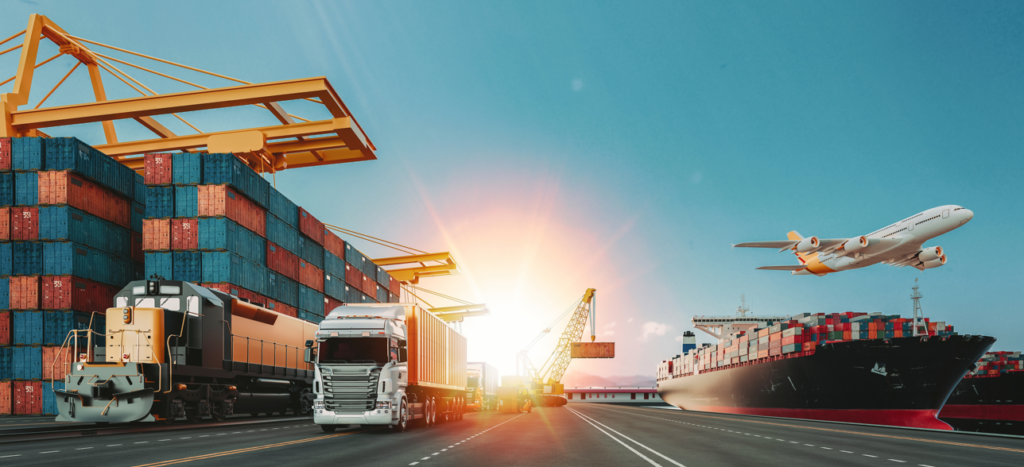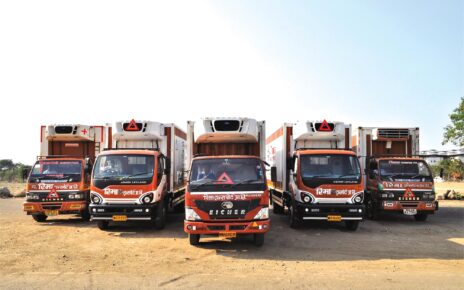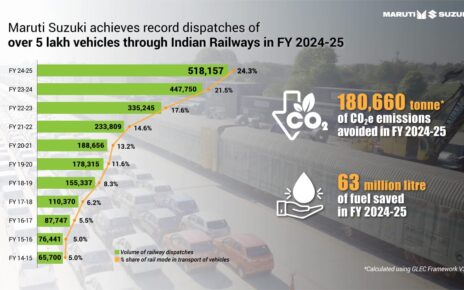By Dhruv Taneja, Founder and Global CEO, Matchlog Solutions

Container logistics is entering a transformative phase, defined by intelligent systems, real-time visibility, and smarter decision-making. For an industry long plagued by complexity, fragmentation, and inefficiencies, the growing role of AI and digitalization offers not just a path to optimization but a foundation for long-term resilience and sustainability.
We are no longer debating the relevance of digital tools in logistics. The conversation has shifted to how best to implement them, how to embed intelligence across operations, and how to transform decades-old static workflows into dynamic, data-driven ecosystems.
Eliminating Friction in a System Built for Scale, Not Speed
Historically, global container logistics has operated with a high tolerance for inefficiency. From documentation delays and underutilized routes to siloed operations across transport modes, the model was designed for volume—not for speed, visibility, or responsiveness. That approach is no longer viable.

With the advent of integrated digital platforms and AI-powered analytics, the industry can now detect inefficiencies in real time and take corrective action before minor issues escalate into major disruptions. This includes optimizing turnaround times at ports, streamlining inland container movement, and reducing idle capacity. Enhanced digital coordination can significantly lower global logistics costs by minimizing unnecessary movements and administrative delays.
AI as a Strategic Enabler
A common misconception about AI is that it serves as a plug-and-play solution for automation. In reality, its true value lies in continuous learning—making supply chains more predictive, responsive, and adaptive over time. For example, AI systems trained on historical shipment data, congestion trends, and cargo demand can forecast delays, recommend alternate routing, and dynamically adjust container allocation. This is especially relevant today, where even minor disruptions can ripple across global networks.
However, implementation is often where initiatives stall. Organizations frequently underestimate the cultural and operational shifts required to harness AI meaningfully. Too much emphasis is placed on the algorithm and too little on the operating model that supports it. Without clean data, context-aware configurations, and trained personnel, AI becomes just another dashboard.
AI should be seen as a catalyst for operational redesign. The real breakthroughs come when AI is embedded into the daily rhythm of decision-making—informing pricing, allocation, maintenance, and planning in a cohesive manner. Used effectively, it doesn’t just solve problems faster—it reshapes the very nature of the problems worth solving.
More importantly, it enhances human capability. It frees operations teams from reactive firefighting, enabling them to exercise proactive control, while empowering leadership to make long-term strategic decisions with greater confidence.
Addressing the Empty Container Challenge
A persistent issue in container logistics is the disproportionate number of empty containers moved each year—largely due to trade imbalances and limited visibility into export-import opportunities.
Digitalization, supported by AI, is beginning to shift this paradigm. Predictive triangulation—matching containers to new loads rather than returning them empty—is gaining traction in high-volume corridors. The result: more efficient equipment utilization, lower emissions, and tangible cost savings across the network. Addressing the empty container problem through improved coordination could reduce associated costs by up to 20% on select routes.
However, achieving this at scale requires systems that can ingest live cargo data, lane capacity, booking patterns, and forecasted demand—and translate those inputs into operationally viable recommendations. This is where the fusion of data science and deep domain expertise becomes indispensable.
Visibility Is the New Baseline
The movement of containers globally involves a complex web of players—ports, shipping lines, freight forwarders, transporters, and warehouses—each traditionally operating within isolated systems. This lack of real-time data sharing creates blind spots, delays, and accountability gaps.
AI and digitalization offer a path forward. Centralized digital control towers now enable stakeholders to monitor and manage container movements in real time, respond swiftly to disruptions, and foster greater trust with customers.
What was once a black box is evolving into a transparent, trackable network—where exceptions can be addressed proactively and resources allocated efficiently. The ability to course-correct in real time, rather than post-mortem, is emerging as a critical competitive advantage.
Embedding Sustainability into the System
As decarbonization becomes central to logistics strategy, technology plays a dual role: enhancing operational efficiency while reducing environmental impact. AI-enabled route optimization, load balancing, and asset utilization directly lead to lower fuel consumption and fewer emissions. Beyond operational gains, digital systems now offer more accurate emissions tracking—at the container, trip, and partner levels.
This level of granularity is becoming essential—not just for regulatory compliance, but also for ESG reporting. Frameworks like the European Union’s Corporate Sustainability Reporting Directive (CSRD) are pushing for auditable, tech-driven disclosures. Logistics providers that integrate carbon intelligence into their digital infrastructure will not only stay ahead of the curve but also strengthen relationships with sustainability-focused clients.
With the global shipping sector under pressure to meet net-zero targets by 2050, embedding sustainability into digital operations is no longer optional. The sooner emissions intelligence becomes as integral as cost tracking, the better equipped the industry will be to lead this transition.
From Technology Adoption to Systemic Thinking
True transformation occurs when digital tools are integrated across functions, insights are actioned by trained teams, and leadership embraces long-term process reengineering. This requires a fundamental mindset shift. The logistics sector must evolve—from transactional to network-based thinking; from rigid schedules to dynamic planning; and from fragmented control to unified intelligence.
Those who move swiftly and decisively will not only elevate operational performance but also gain strategic leverage in the evolving landscape of global trade.
Conclusion
Container logistics has always been about moving goods efficiently, safely, and reliably. What’s changing now is how intelligence is embedded into that movement. AI and digitalization are empowering the industry to transcend legacy limitations and unlock new value—not only in terms of performance but also resilience, sustainability, and competitiveness. The next chapter will be shaped not by technology alone, but by how boldly we reimagine logistics as a connected, intelligent, and future-ready system.




